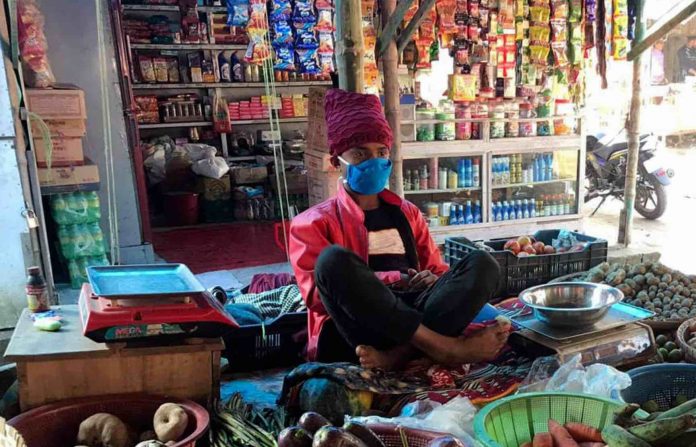In April 2020, as COVID-19 spread, the government of Bangladesh strongly recommended that citizens wear masks; a month later, masks were mandated. Eighty percent of Bangladeshis initially reported in surveys that they were wearing masks.
“As we were tracking the data, we were seeing that suddenly a lot of people in South Asia started wearing masks,” says Yale SOM’s Mushfiq Mobarak, a development economist who was already engaged in studying COVID-19 in the developing world. “We actually paused the research for a bit. A donor who was interested in supporting it, I called them back and said, it doesn’t seem like this research is necessary right now, because people have solved the problem for themselves.”
But as the months passed, mask-wearing didn’t seem to be continuing. “As we kept tracking, month by month, June, July, August of 2020, we saw that this wasn’t a behavior that was persistent or consistent.” Surveillance studies by Mobarak’s team showed that only half of people in Bangladesh were wearing masks in May and a quarter in June.
So Mobarak and his co-authors, who include Yale SOM’s Jason Abaluck, set out to investigate ways of encouraging mask use that would stick—to create new social norms. In order to simultaneously test a variety of interventions, the study, carried out in partnership with the NGO Innovations for Poverty Action, had to be huge, involving over 340,000 people in 600 villages. Each village where interventions were carried out was paired with another in a different union to serve as a control, within the same national subdistrict but not so close that interventions in one could have a spillover effect in the other. Surveillance staff were assigned to observe and record the prevalence of mask-wearing in markets, mosques, tea-stalls, and at the main entrances to villages.
The results showed that a “cocktail” of four interventions together had a substantial effect, increasing mask-wearing from 13% in the control areas to 42%—an effect that was consistent over 10 weeks, and persisted during two weeks of surveillance after the interventions ended. Three of them, Mobarak says, produced a much smaller impact: free distribution of masks direct to households, at mosques, and at markets; endorsements from imams and other community leaders; and promotion of the mask program through videos and brochures, “making sure that people understood that everybody in this community received masks and everyone was expected to wear it to protect each other.”
The key fourth ingredient that was needed to see larger increases in mask-wearing was the deployment of monitors to gently intervene when people weren’t wearing masks. “They walk around and if somebody is not wearing a mask, they intercept them and politely say, ‘We distributed masks here—why aren’t you wearing one?’” If the person didn’t have a mask or couldn’t go home and get one, the monitor offered a free surgical mask.
The team tested a variety of other interventions that did not prove to make a difference. For example, seeing the impact of the monitors, they wondered if a monitor accompanied by a village police officer would be even more effective. “It turns out that that doesn’t increase the effect size any more,” Mobarak says. “It’s not so much that there’s a threat of legal sanction that people are worried about. It’s more this informal sanction—the awkwardness of that conversation and people’s desire to avoid that little bit of shame that you might feel.”
Nor did text message reminders, rewards for villages with improved mask-wearing rates, or messaging that emphasizes the altruistic benefits of mask-wearing make an impact. And when applying the results, knowing both what does and doesn’t work is key, Mobarak points out.
“It is a precise combination of things and a set of tasks that need to be done in an overlapping, integrated way,” he says. “You can’t just do one and not the other. And we’re also able to tell the government, there’s a whole bunch of other things that you might think are reasonable ways to promote masks, but we can safely avoid doing them and save money.”
To help reinforce these key elements, Mobarak and his team have created a mnemonic: NORM.
The researchers and their NGO partners are already working with governments to implement the interventions identified in the study, reaching out to the World Health Organization, the World Bank, and regional leaders in Bangladesh, Pakistan, and India, where infections have exploded since late March.
“We’ve realized that we need to create what we call implementation toolkits, with all these details laid out clearly for them, and then directly talk to the government staff, not only at the high level, but the people who would be working at the field level and the mid-level bureaucrats,” Mobarak says. “For us to get at something like a hundred million masks quickly as well as implement the complementary set of interventions that are required to ensure that people wear those masks persistently, this kind of nuts-and-bolts work is really critical.”








